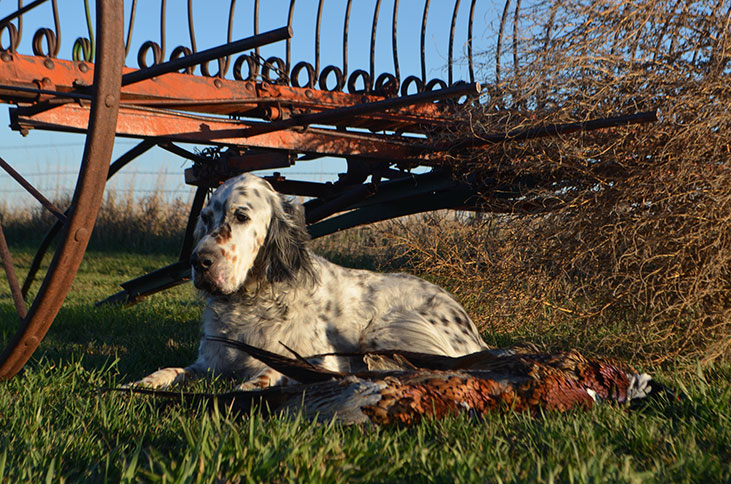A Pheasant Reminder
If further evidence was needed that a wildlife conservation battle is never won — at least not permanently — the situation with pheasants in the Dakotas provides it.
Pheasant numbers in South Dakota have been declining steadily, with the occasional blip upwards, for the past 15 years. I know this because I’ve hunted them every year since 2007. Because of that, I’ve followed the events that affect pheasant numbers, and spent long hours talking about pheasants with landowners, other hunters, the occasional state wildlife guy and one or two representatives of Pheasants Forever.
With any game species, the biggest single factor affecting population, after legal protection from extermination, is habitat. Restoring or preserving habitat has been a prime focus of Pheasants Forever, and the federal Conservation Reserve Program (CRP) was a huge benefit. I remember writing about CRP for the first time more than 25 years ago, and it was being hailed then as the savior, not only of pheasants, but other game birds like Hungarian partridge and sharp-tailed grouse.
Essentially. the feds paid farmers to leave land fallow and allow prairie grass to grow, providing undisturbed cover and nesting places. CRP plots might be flanked by corn, grain, or soybeans, which provide food. It was a great idea.
Unfortunately, the CRP ended a few years ago, just as corn prices took off. Suddenly, all that fallow land could be returned to highly profitable crop production. Along with corn prices, land prices took off, too. Since 2008, with interest rates almost zero, big money has been buying up farmland purely as an investment, and managers of that land are under pressure to make it pay.
Modern farming methods are, generally speaking, no friend to wildlife. If we take Iowa as an example, farmers there compete to see who can get the highest yield per acre and till every arable square inch of land. Seventy years ago, Iowa was noted as a great state for pheasants. Today, wild pheasants are rare.

When we arrived to go pheasant hunting in South Dakota last week, a store clerk in Platte commented that they “don’t see many hunters these days.” Why? Mainly because CRP land has been plowed under, and the plowing is going right up to the fences, as farmers try to squeeze out every bushel they can.
The land where I hunted for the past 15 years was acquired in the 1990s by three men who wanted a good pheasant hunting area. They rented the land to nearby farmers but, stipulated how it should planted. The result was more than 1,000 acres meant to produce wild pheasants, not bushels of corn. The farmers still made enough money that it was worth their while paying to rent the land, and everyone was happy.
I should add that the land was acquired way back then for $200 to $400 an acre; last month, some nearby crop land sold for $9,000 an acre. $9,000! Because one of the partners died, our hunting grounds are going on the block to settle the will, so this was our last year hunting there. The remaining two partners, plus the beneficiaries of the third, will do well out of it. It was certainly a good investment for them, but with land prices that high, the pressure on managers to make the land pay will only get worse.
Land that has been a pheasant paradise for a quarter-century will most likely become a pheasant wasteland.
When you combine these long-term factors with a few short-term events, such as severe flooding three years ago, terrible hail storms the year after that, and this year a near-drought through the growing months, the outlook for pheasants in the Dakotas ain’t great.
Short of laying out a cool million to buy yourself 100 acres and start growing your own pheasants, about all we can do is keep supporting Pheasants Forever and other conservation groups like Safari Club International Foundation and hope for the best. As I say, no conservation battle is ever won for good.
Terry Wieland is a recognized authority on fine firearms whose latest book is Great Hunting Rifles, Victorian to the Present. He has hunted in more than a dozen countries on four continents including, at last count, 11 trips to Africa. He lives in Fenton, Missouri.

